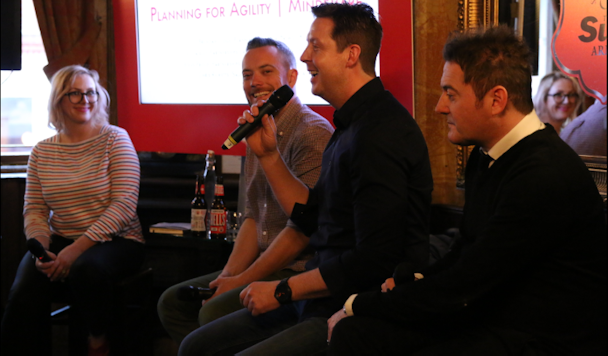Planning for agility: the importance of data, audience and dissenters
Agility is a word marketers need to get comfortable with as they are increasingly being required to plan their marketing initiatives while being responsive to changing consumer needs. But can agility and creativity work hand in hand? And how should marketers be structuring their processes to respond better, and faster?

Planning for agility panel
At The Drum and The Sun Arms panel in London, Brendan Judge, planning director at News UK, Steve Proud, partnerships business director at Mindshare UK and Chris Ricketts, sales director at Perform Media gathered to discuss their views.
Here are the highlights.
Use data to plan for agility, but be mindful of your audience
Mindshare's Proud found data really useful when planning for agility, using it to target specific audience segments through advertising.
“When we worked with Kleenex, we used data to analyse how people were searching for flu and cold remedies and if it went over a certain threshold, we dialled up the outdoor and digital advertising in that area.
He continued: “So if we found there were a few epidemics in Newcastle, we put more advertising there, whereas if we knew not many people were searching for it in London, we dialled it down. That was a resource deployment through data - we were reacting to the needs of the people.”
But using data in a newsroom environment is a little trickier, said News UK’s Judge, because “there is no such thing as having 100% certainty”.
“As Mike Tyson once said, everyone has a plan till you get punched in the face. As new facts emerge, you must be able to change course and edit what you are doing, because that’s the way the newsroom works,” he explained. “There is an element of bravery required too – as sometimes you need to rely on your gut. Just because you can, does not mean you should.”
Got a good idea? Good - get everyone involved now
While being reactive to changing circumstances is important, it is still crucial to get all the parties involved with the campaign to agree on the overall content and tone well in advance of the event, added Perform Media’s Ricketts. In essence, being simply reactive is not enough.
“Everyone needs to agree on the context and tone of the message before you get to the weekend football match. Because there is no way you’re going to get five or six different parties to sign off within 20 seconds of something happening on the pitch,” he warned.
Get a dissenter, or risk creating a ‘tone-deaf’ creative
News UK’s Judge said that while in-house creative teams can be useful, extra care must be taken to not develop a "herd mentality", giving the Pepsi's Kendal Jenner ad as an example. He said a pair of ‘fresh eyes’ might have saved Pepsi.
“I wonder whether that was because no one from the outside said, ‘what are you thinking?!’
He added: “It’s that kind of dissenting voice you need – otherwise you will create a tone-deaf creative that gets you into the headlines for all the wrong reasons.”
In the end, while planning for agility is never straight forward, harnessing data and adhering to the core principles of relevance and collaborative input go a long way in achieving the right campaign result.


